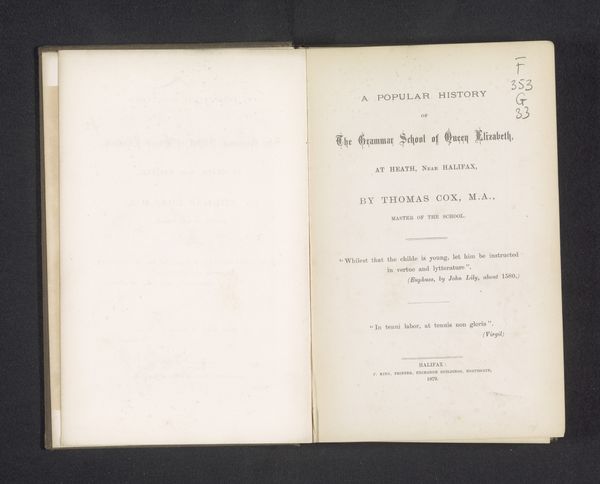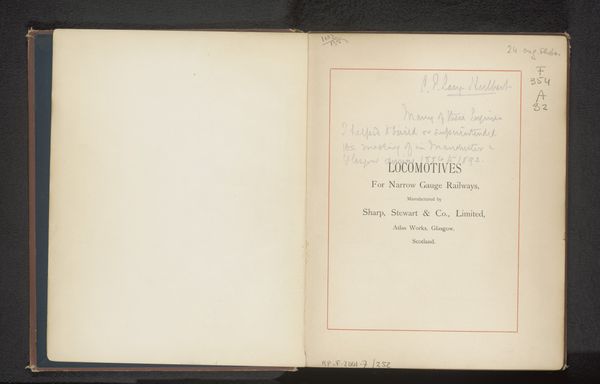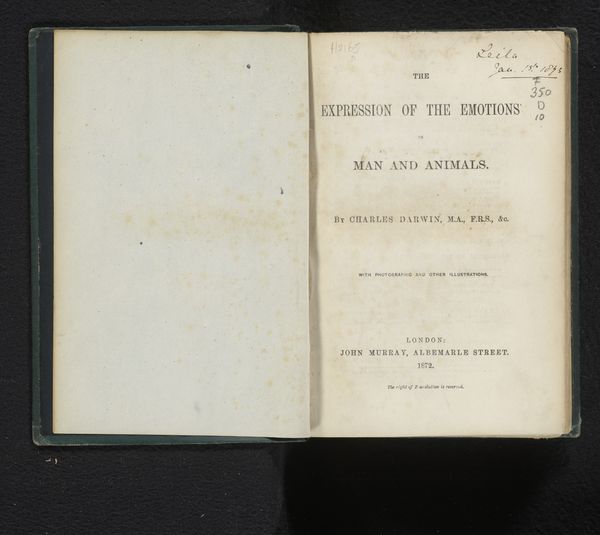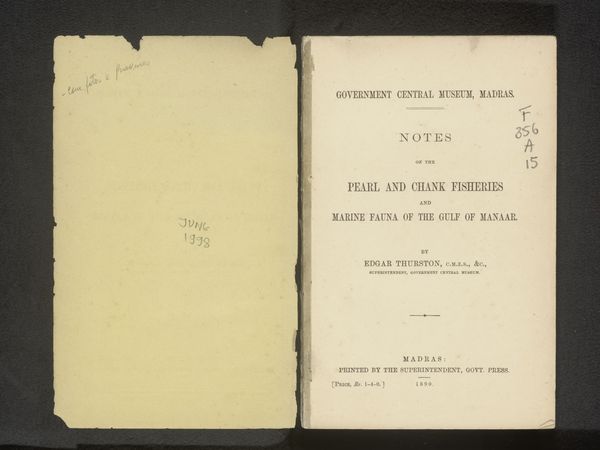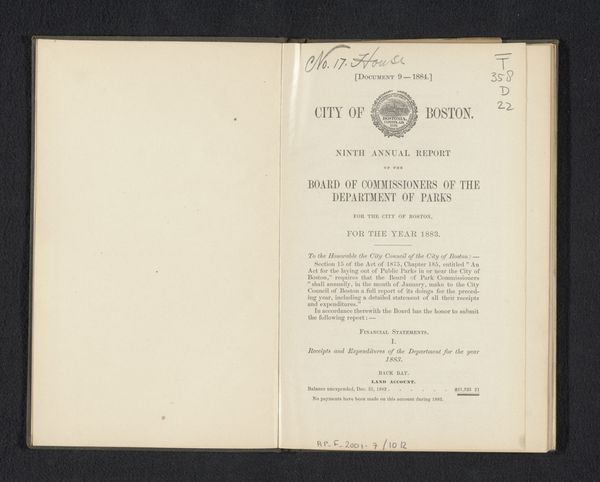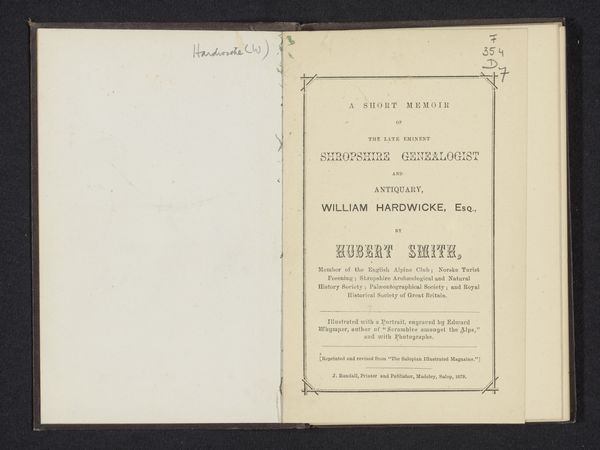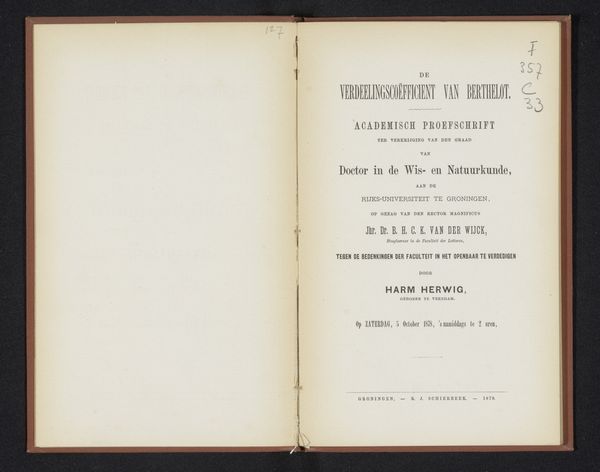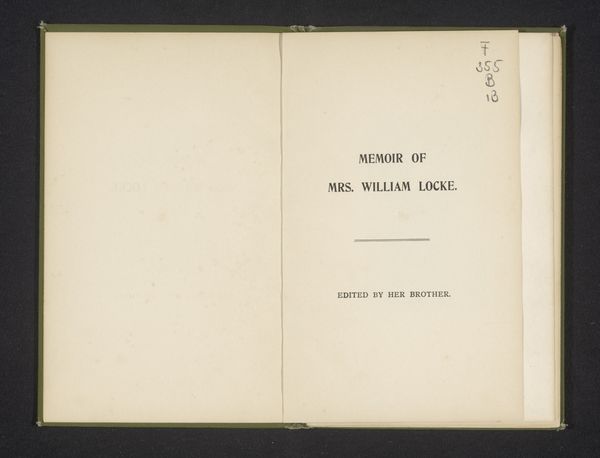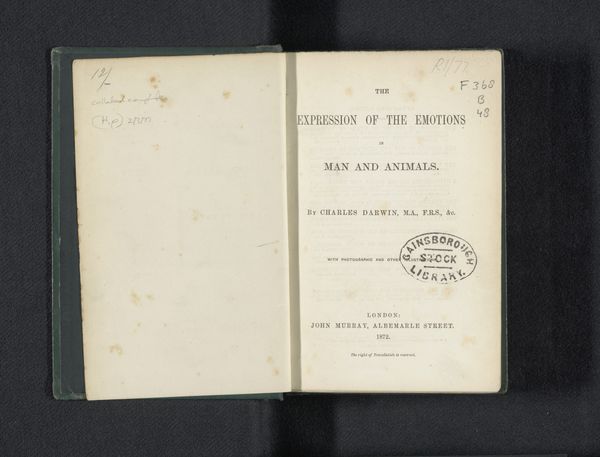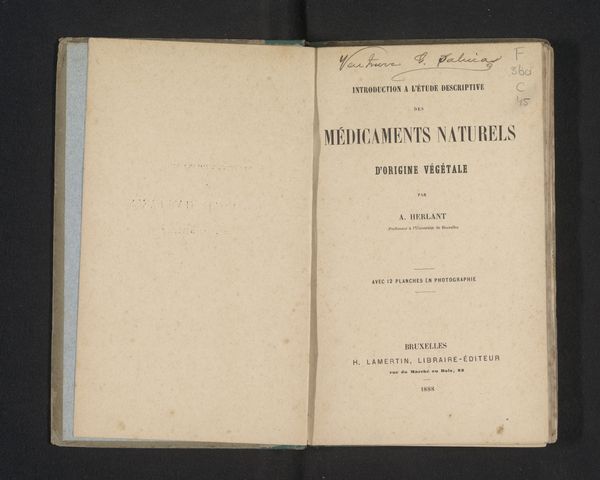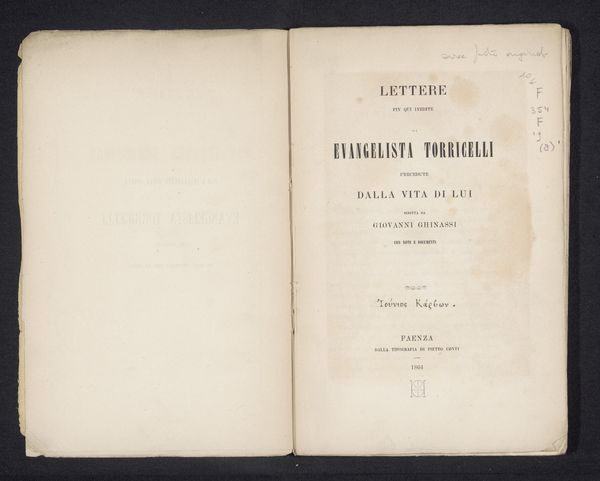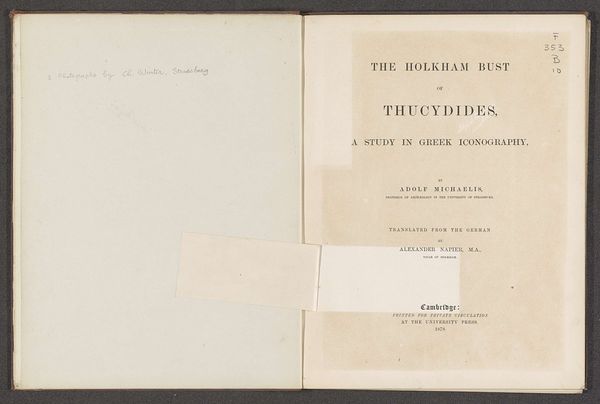
Life and letters of Frederick W. Robertson, M.A. incumbent of Trinity Chapel, Brighton, 1847-53 1866
0:00
0:00
print, paper
#
portrait
# print
#
paper
Dimensions: height 199 mm, width 142 mm, thickness 35 mm
Copyright: Rijks Museum: Open Domain
Curator: Here we have a book from 1866, "Life and Letters of Frederick W. Robertson, M.A." It's an open book; on the right is the title page, printed on paper. What are your initial thoughts? Editor: Well, I immediately notice the texture and visible aging of the paper. It evokes a feeling of historical weight, you know, touching something that someone would have made such a long time ago. You see the slight imperfections in the print, which makes you think about the labor behind such printed work at that time. Curator: Indeed. Note the deliberate arrangement of text on the title page; the hierarchy established through varied font sizes draws the eye to Robertson's name and then the editor's. Observe, too, the framing of text by blank space—it enhances the readability, contributing to the text's function and inherent design value. Editor: That’s a very formal reading. I can't help but consider the manufacturing. Paper production, printing processes, binding… Someone prepared the ink, and some people will buy and read the words of this book. It emphasizes its physicality; it becomes more than simply information, but an object to produce, disseminate, and consume. Curator: Of course. I see the structure as reflective of the Victorian focus on biographical narratives. Robertson was clearly important, as this is the fourth edition! Editor: It makes me think about who was buying such books, middle-class professionals probably; considering its role in disseminating particular ideas at the time. Was Robertson’s life a vessel of middle-class virtue, maybe? Curator: One could certainly apply such a reading through historical context and semiotic analysis! The careful placement of the words constructs not only information, but a visual testament to Robertson’s enduring legacy. Editor: Absolutely. So, considering materiality enriches our reading beyond mere content analysis, focusing us back on both production and reception as critical for meaning. Curator: And from that viewpoint, the artistic structure helps create that reception for diverse interpretations to flourish. Editor: Quite so. This book’s journey as an object made and read. It shows that books as an accessible art and object have power!
Comments
No comments
Be the first to comment and join the conversation on the ultimate creative platform.
